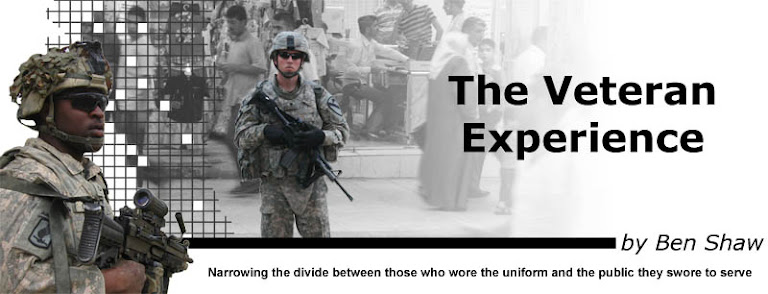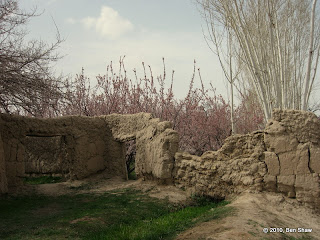Though it may be viewed by some as premature (for it frankly is), I have collected a few assessments of the Afghani countryside, terrain, the people, and the international effort to aid them in restoring and maintaining order within their borders.
It should be noted that the culture is altogether fractious – due to ethnic tension, geographic isolation, pockets of extremism, international influence (namely in the regions periphery to Pakistan), and widely-varying economic conditions. As a general rule, however, survivalism appears to trump almost anything else. I will return to this momentarily.
To the surprise of many, I touched down in a civilian airport in this country – Kabul International Airport (however small), was quickly processed by customs, grabbed my bags, and wandered outside alone. No military personnel were waiting for me (nor was I expecting them to be there). Upon reaching the parking lot, a local national approached, inquired in English if I needed a cab (to which I responded in the affirmative), and he grabbed his driver, stuffed my gear into the trunk, and we drove off into the chaos of Kabul. The total cost for this transport: 100 US dollars.
Traffic was much as I expected; road-beaten old cars, jumping along pothole-ridden streets, opposing traffic careening towards us, open vendor stalls on either side of the roads, and a high number of pedestrians. I attempted to get some footage of it, which can be found online here:
http://www.youtube.com/watch?v=3KFosar2IcM As I witnessed firsthand in Iraq, there were frequent police and military checkpoints. Also as I noticed in Iraq, they're virtually ineffective. Personnel simply wave vehicles through, perhaps wave a greeting at a familiar face, and that's about it. That, friends, is how Iraqi security forces failed to effectively reduce ordnance trafficking into Baghdad (ordnance which later became devastating carbombs in crowded public areas).
For lack of a better way to put it, some degree of poverty is commonplace here. One could argue it's a lower standard of living, but such things are usually the consequence of necessity, not conscious decision. Nothing is new, nothing is clean, and very little appears particularly improved. I did see some new structures under construction, but they seemed to be the exception.
In terms of terrain, northern Kabul sprawls. It extends away from the road, and up the surrounding hills (mostly to the west). Most of it appears to have been developed DESPITE the inhospitable terrain. Buildings are perched on rocks, or rocks are carved back a bit and a home is butted against them. Most homes, however, are just square concrete structures built on dusty soil and rock, and the land is utterly devoid of vegetation. I honestly don't recall seeing but a few trees or shrubs (whereas portions of Afghanistan to the south of here are quite superb for growing certain crops).
Aside from a strong propensity for peace, the other fundamentally missing element here in the north is water. Rainfall is already minimal, a drought has worsened it, and Afghans complain that the bulk of their water is “lost into Pakistan,” which I presume means the river flows out of the country and Afghanistan, for more reasons than I can list here, lacks the sustainable infrastructure and finance to create a canal system. Everything is dry, and this is considered the tail end of the rainy season. Come later in the year, the dust will be choking. The Afghans told me that.
The picture is decidedly bleak, insofar as poverty creates an imprisoning culture of hand-to-mouth survival. People don't seem to thrive here. Frankly, they don't seem to live, either. No; they survive. They get by. It's probably best summed up by a recurring sight I encountered on the road north out of the city. Firewood, of all things.
Anyone in the US who has spent time outside of a major city knows what firewood looks like. Even if they live in a city, they've probably seen it. Around Christmas, many grocery stores SELL it. Vendors sell it here, too, but I initially didn't even recognize it as firewood. It's all wrong.
Firewood logs – typically – are roughly 20 inch lengths of a tree, usually fairly straight, and chopped into manageable sizes. Yet here, that isn't the case. Here it's gnarled, twisted, and looks more like short pieces of root than tree. At first glace, that's what I thought it was. But after a saw it a few more times, I concluded it was from grape vines.
If I can drive nearly an hour and not observe hardly a single scrap of vegetation, I can presume that most vegetation is going to be cultivated. Unlike the US, grapes probably don't just grow naturally around here. They are planted, tended, and used to somehow support oneself and family. So, if it's firewood, there's something severely amiss.
A grape arbor transformed into a heap of firewood indicates that a crop is dead or dying, a primary source of income is diminished or altogether gone, and there's little more to do but sell the scraps as fuel. I even observed a boy attempting to SPLIT some of these short “logs.” He appeared unsuccessful.
So, if you're burning your dead crops (the only fuel available) for firewood today, what will you burn tomorrow? Moreover, what will you eat, what will you sell, and how will you survive? None of these are easy questions, and I confess I have't a single reasonable answer.
I do know for a fact that the Army Corps of Engineers is building wells in the area and that the locals are supremely excited that they may now be able to irrigate their crops. I heard of one village today where the population has dwindled from about 1,500 to 500 – mostly for reasons of water unavailability. As much as it will help, wells won't fix everything. They merely represent a positive step in the right direction. Also, take into consideration that this is a problem around NORTHERN Afghanistan. To the south, the objection is with WHAT they're growing.
Survivalism, if I may overuse the word, is not conducive to a sustainable culture, region, country, or geographically isolated locality. It is a philosophy of “make do” today, and worry about tomorrow whenever tomorrow arrives. Typically, tomorrow will require a greater sacrifice; but the troubles of today make that a distant second to the present.
Survivalism also provides a breeding ground for a host of other social problems. Moral flexibility takes root (at least here), as Afghans concern themselves less with doing right and more with not starving to death. Now, if you factor in a longstanding history of violence (from a myriad of sources), the conditions are further worsened.
Despots will rise abundantly with the promise that they can provide some sort of sustainability. People, in dire need of food and stability, will eagerly follow them. But despots also have agendas – often very self-serving agendas – and use their positions of power for person gain, overtly or subtly.
Violence is also given a dangerous foothold, since overwhelming fear of somebody or some group becomes the only means by which to control them. When despots aren't promising things they rarely deliver, they're using fear to maintain their positions.
Now, factor in ethnic tensions, Islamic extremism, and whatever localized problems plague a culture, and the situation is worsened even further. In fact, things spiral out of control. Kindness is generally confused for weakness, and the kind give up after they've been exploited. Good leadership challenges a populace, so they're often killed off before they have opportunity to make much difference. Battle lines are drawn, people arbitrarily align themselves on either side (and frequently switch, too), and chaos ensues.
International Security Assistance Forces (ISAF), the collaborative effort of more than 40 countries serving here under NATO command (54% of whom are US forces), are caught in the middle of it, and faced with difficult problems for which there are few (if any) easy remedies.
How do you convince a culture of the merits of peace when “peacemongers” are consistently killed off by the opportunistically violent? How do you raise good leaders when it guarantees an imminent threat on your life? How do you break a cycle of violence more than 1,000 years in the making? How do you encourage a culture to consider sustainability when they don't have the luxury of thinking beyond what and how they'll eat today? How do you bring forth lush vegetation and crops from a land where the rain rarely falls, winters are brutally harsh and summers are oppressively hot?
Fundamentally, how to you convince a culture unfamiliar with it, that some sort of peaceful self rule, free from the fear of their leadership, is a better way of life? They've never witnessed it, after all, so it's unreasonable to presume it an innate conviction. No, you have to DEMONSTRATE that it's a viable alternative to perpetual war with other nations, one's own countrymen, and even a neighbor. But that, however, takes an enormous commitment of time, resources, and the unwavering attention of people who genuinely care. Time, though, is in short supply. Neither the US public, nor the citizenry of any other country serving here under ISAF are patient. They want results, and they want them soon. They want their boys and girls home, and less time invested in foreign catastrophes while they face lesser ones domestically. They want results now, or yesterday. At the very least, soon.
Looking about Bagram Airfield (BAF), one gets the impression that NATO forces have committed enough troops to make a difference in Afghanistan, but a wholly insufficient number to make a LASTING one. A public relations war is not won strictly by creating “sustainable wealth” (the favorite catchphrase in both Iraq and Afghanistan). Nor is a kinetic war won by simply killing the enemy. Eliminating a dominant threat may be necessary, but truly sacrificial leadership must be poised and ready to step into the void created by dispatching the enemy.
The nature of Afghanistan is that the populace isn't terribly inclined to align with the “right” side. Instead, they're inclined to align with the side they think will win – and thereby stay in their good graces. Yet NATO, fighting a PR and kinetic war on multiple fronts, doesn't want to win. They want a legitimate Afghan government and defense forces to win. And that has proven quite difficult.
Unfortunately, international efforts are notoriously top-heavy, full of overlapping logistics and planning personnel, redundancy, confusion, and organizational nightmares. I have to wonder sometimes if a number of personnel, isolated as they are on Bagram, have forgotten there's a war going on. The best example of that was what I observed yesterday.
While walking along the roadside, I passed a foreign airman (perhaps Polish?), appropriately dressed in his fire-retardant flight suit. Inappropriately, he was sporting at least ten individual unit patches which virtually covered both shoulders and the upper torso of his uniform. And even some shiny pins. Worse yet, he was also wearing a blue silk ASCOT. Who, may I ask, wears an ascot in a combat zone? I would equate the sporting of an ascot in a combat zone to a Marine infantryman buckling the NCO sword to his waist every time he prepares for a mission. I'll say no more.
It's hard to make generalizations about this place, this terrain, and this culture. Because of that, solutions – which require a degree of generalizations – will meet with only limited success. But everybody's learning, and the battlescape is changing quickly to reflect this. Over the next two months, I'm looking forward to discovering how individual units and commands are tackling the challenges unique to their areas of responsibility. Please keep reading, and encourage others to do so as well. As a nation, we need to know what our servicemembers are doing.
Copyright © 2010, Ben Shaw, All Rights Reserved
www.byshaw.com
www.byshaw.com/blog


























